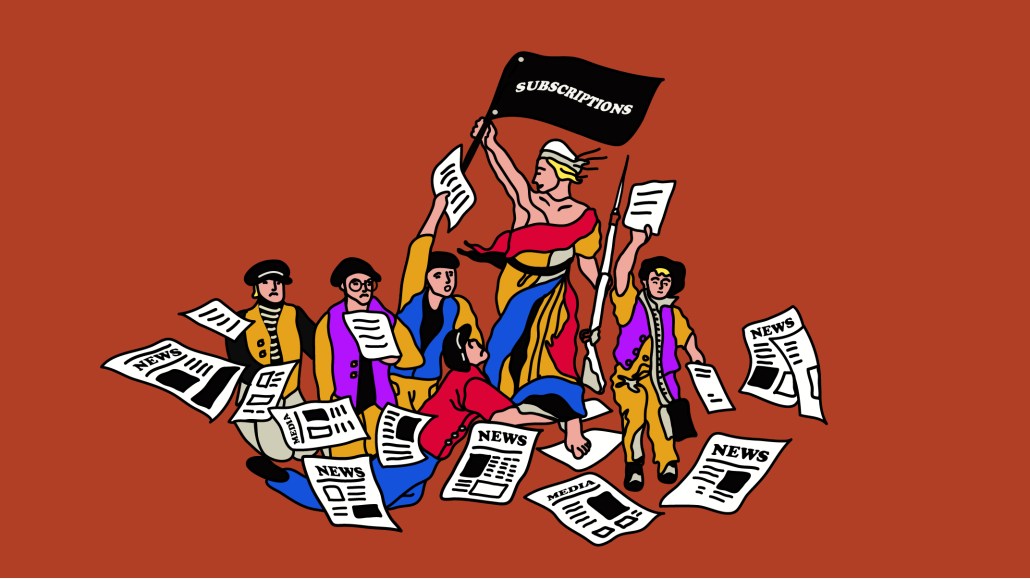‘Reestablishing our journalistic value’: Publishers make more of their exclusive subscriber content

News publishers have always promoted the idea that they produce content worth paying for. They are now putting that more aggressively into practice by making more of their content exclusive to subscribers.
This past weekend, the Philadelphia Inquirer launched a digital version of its annual dining guide, “Let’s Eat, Philly!” Normally a print product, this year the Inquirer added 30% more content to a digital edition and made it exclusive to subscribers for four days; on Monday, the Inquirer moved it out from behind the paywall, though the digital “Let’s Eat” content is now metered.
The Inquirer’s test was small, but it launched hundreds of subscription starts, with subscription starts jumping 53% compared to the Inquirer’s average, said Evan Benn, the Inquirer’s director of special projects and editorial events. It is also part of a trend among news publishers learning more about content their readers will subscribe to. For the past several months, Tribune Publishing has been putting small portions of its content behind the paywall using two different methodologies. At the Baltimore Sun, the pieces are chosen by the editorial staff, while the Chicago Tribune uses software developed by the consulting firm Mather Economics, which scores content’s likelihood of converting, to pick which stories will be premium.
The tests include a small amount of content, said Idalmy Carrera-Colucci, Tribune’s vp of engagement and retention; around five stories per week go behind the paywall in Baltimore. But so far, the growth in subscriptions has made up for the loss of ad revenue that comes from content being available only to paying readers. A digital subscription to the Tribune costs $3.99 per week.
“It’s a positive experiment so far,” Carrera-Colucci said, who declined to offer dollar figures.
The Dallas Morning News now puts about 10% of what it publishes every day behind its paywall, with the paper’s audience development team using a mixture of conversion data and gut instinct to decide what goes back there, chief product officer Mike Orren said.
That team has gathered enough data to identify types of stories it is confident will do well. Exclusive stories about Dallas’s food and drink scene, for example, or local business stories, are both likely to deliver lots of subscribers. “The data tells you how to do it by feel,” Orren said.
Ad position: web_incontent_pos1
That project has played a key role in the sustained subscriber growth that the Dallas Morning News has seen over the past six months — the paper’s subscriber base has grown 39% year over year in each of the past two quarters. Orren said that the number of paywall starts has gone up ten times because of the effort, with no effect on the conversion rate. Orren too decline to discuss dollars amounts; a digital subscription to the Dallas Morning News costs $2.99 per week.
Not all of a paper’s output is eligible for these kinds of initiatives. Most papers remain committed to keeping coronavirus reporting that is in the public interest in front of their paywalls, rather than behind it.
In addition, much of the reporting that is supported by nonprofit or philanthropies is also kept in front of the paywall so that the greatest number of people can access it. McClatchy, for example, which first began making content subscriber-exclusive late last year, keeps most of the content produced by its lab teams, which cover topics such as public education, freely available, said Ian Swenson, the editor of McClatchy’s news analytics department.
But even with those exceptions, most publishers manage to increase the amount of content they reserve for paying readers. McClatchy’s learned so much about what works that it is considering a change to what it recommends to the publisher’s local newsrooms, which have final say in what gets paywalled, and what does not.
Swenson said his group thinks McClatchy’s newsrooms could paywall more content than they currently do, though he stressed that the current recommendation is for a single-digit percentage (Swenson would not share a specific number); some titles put more than is recommended behind the paywall. “I’ve described it as reestablishing our journalistic value,” Swenson said. “We’ve learned that it works.”
Ad position: web_incontent_pos2
This story has been updated to include statistics provided by the Philadelphia Inquirer.
More in Media

NewFronts Briefing: Samsung, Condé Nast, Roku focus presentations on new ad formats and category-specific inventory
Day two of IAB’s NewFronts featured presentations from Samsung, Condé Nast and Roku, highlighting new partnerships, ad formats and inventory, as well as new AI capabilities.

The Athletic to raise ad prices as it paces to hit 3 million newsletter subscribers
The New York Times’ sports site The Athletic is about to hit 3 million total newsletter subscribers. It plans to raise ad prices as as a result of this nearly 20% year over year increase.

NewFronts Briefing: Google, Vizio and news publishers pitch marketers with new ad offerings and range of content categories
Day one of the 2024 IAB NewFronts featured presentations from Google and Vizio, as well as a spotlight on news publishers.
Ad position: web_bfu



